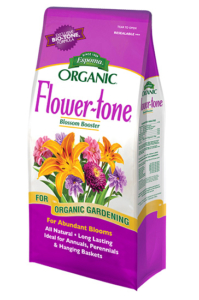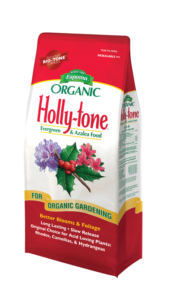
🌸 Meet Skye Hamilton: The Hydrangea Queen with a Designer’s Eye and a Gardener’s Heart
It’s no secret that Holly-tone has been one of our most beloved products for generations. Introduced in the 1940s, it was the first fertilizer created specifically for acid-loving plants—and it’s been a go-to for gardeners ever since, helping hydrangeas, azaleas, rhododendrons, and evergreens thrive. With hydrangeas continuing to be one of the most sought-after blooms in gardens everywhere, it feels only natural that the Hydrangea Queen herself, Skye Hamilton, not only uses Holly-tone but proudly recommends it. We find ourselves inspired by Skye’s passion, authenticity, and eye for beauty in the garden and are thrilled that we can share more about her with you.

Before being known as the Hydrangea Queen, Skye spent 18 years as a professional interior designer. Her belief? That your outdoor spaces should be just as beautiful and personal as your indoor ones. “I’ve always loved the idea of a storybook life,” she shares. “So many of my favorite books revolve around beautiful homes and gardens—and I wanted to create that in real life. That love of beauty and intention shows up everywhere in Skye’s world. Whether she’s hosting a backyard BBQ or a birthday party, she’s curating an atmosphere that’s warm, inviting, and totally magical. “Tending to my yard and garden is not only self-care—it’s how I care for others.”
How She Became the “Hydrangea Queen”
Skye’s love for hydrangeas began with a vision. While renovating her old farmhouse in the Pacific Northwest, she knew it needed a hydrangea hedge. “I didn’t know the first thing about them, but I made it my mission to learn,” she says. Then, during the pandemic, she joined several Facebook gardening groups and found that she enjoyed answering questions and sharing her newfound knowledge and experience with others. Then came the Instagram reel that changed everything. Skye posted a reel about hydrangeas to her design account—just for fun—and it took off. “It was so much more fun talking plants than working with clients and contractors. It just felt like a no-brainer to shift to gardening content creation.” And if you’re wondering about her brand name, Hamilton House Design, that’s a holdover from her design business. “I just never changed it,” she laughs.

Her Garden Favorites & Best Advice
While hydrangeas are front and center in her garden, when asked if they’re her favorite plant, she admits they are tied for first place. “I love hydrangeas so much, but roses are right up there too,” she admits. We asked her to share the most common misconception about hydrangeas. “Hydrangeas aren’t one-size-fits-all. There are six main types, each with different growing needs. When people say they can’t grow hydrangeas, I always ask which kind they tried. There’s a variety for almost every climate—you just need to find the right one for your garden.” Skye’s approach to gardening is refreshingly honest. Some of the best advice she’s ever received: If you aren’t killing plants, you probably aren’t doing it right. “Gardening is often best learned through trial and error and moving things around.” And the tip she loves to share with others: “Know thyself.” She encourages new gardeners to be realistic about their time, energy, and interest. “If you love flowers but don’t have a lot of time, go with easier, low-maintenance varieties. You’ll thank me later.”
 Skye, Beyond the Garden
Skye, Beyond the Garden
Skye describes herself as “kind of a weirdo”—in the most charming way. “Ask any of my family or friends,” she says with a laugh. “I don’t take myself too seriously. I love kitchen dance parties with my husband and kids. I love throwing elaborate dinner parties, but most days I’m in sweats or a bathrobe, drinking coffee in bed while binging Bravo.” Raised by a mom from Virginia and a dad from Idaho, Skye blends the classic charm of the East Coast with the laid-back vibes of the Pacific Northwest. Her life, like her garden, is full of beautiful contrasts.
 Why Community Matters
Why Community Matters
Skye’s found something special in the gardening community. “In my day-to-day life, none of my friends or family garden,” she says. “So, finding this community online has been amazing. I’ve learned so much from other gardeners all over the world—and you’re never done learning. I’ve formed real friendships and found support in this community.” But while she loves the community, she’s also honest about what can be frustrating. “Sometimes there isn’t enough transparency. People only want to showcase the highlight reels with the perfect blooms, and not the dead plants or weeds. That can be really discouraging for beginners,” she explains. “A green thumb isn’t something you’re born with. It’s just hard work, education, and lots of trial and error.”
We love Skye’s goal of not only educating others but also shining a light on the real side of gardening—the trial and error, the messy moments, and the magic in between. Her honest, joyful approach is exactly what we believe gardening is all about, and we’re so excited to share more from Skye and her garden in the seasons ahead.

*****
Learn More about Skye Hamilton:
Website
Instagram
Facebook
YouTube
Pinterest
Featured Products:













 Skye, Beyond the Garden
Skye, Beyond the Garden Why Community Matters
Why Community Matters









